Ah, pineapples! These tropical fruits are a favorite of many, with their sweet and tangy flavor, juicy texture, and unique appearance. But did you know that there are a few main types of pineapple strain? In pomology (the study of fruits), a strain refers to a cultivated variety of a fruit that has been selectively bred for certain traits such as taste, appearance, and disease resistance.
Each pineapple strain has its own distinct characteristics, from the flavor to the appearance to the growing conditions. In this article, we’ll explore some of the different strains of pineapple and their popularity.
Smooth Cayenne Pineapple Strain
One of the most common strains of pineapple is the Smooth Cayenne pineapple. This variety is known for its high yield and sweet flavor, and is often used for canning and juice production for global manufacturers like Dole Pineapple Company. If you’re eating tinned pineapple, chances are it’s a Smooth Cayenne.
The Smooth Cayenne pineapple has a cylindrical shape and a smooth, golden skin with diamond-shaped patterns. Its flesh is also a vibrant golden color and has a sweet, tangy taste with a slightly acidic kick. This strain of pineapple is grown in many regions around the world, including Hawaii, Thailand, and the Philippines. You’ll find them by most roadside stalls and markets across South-East Asia.
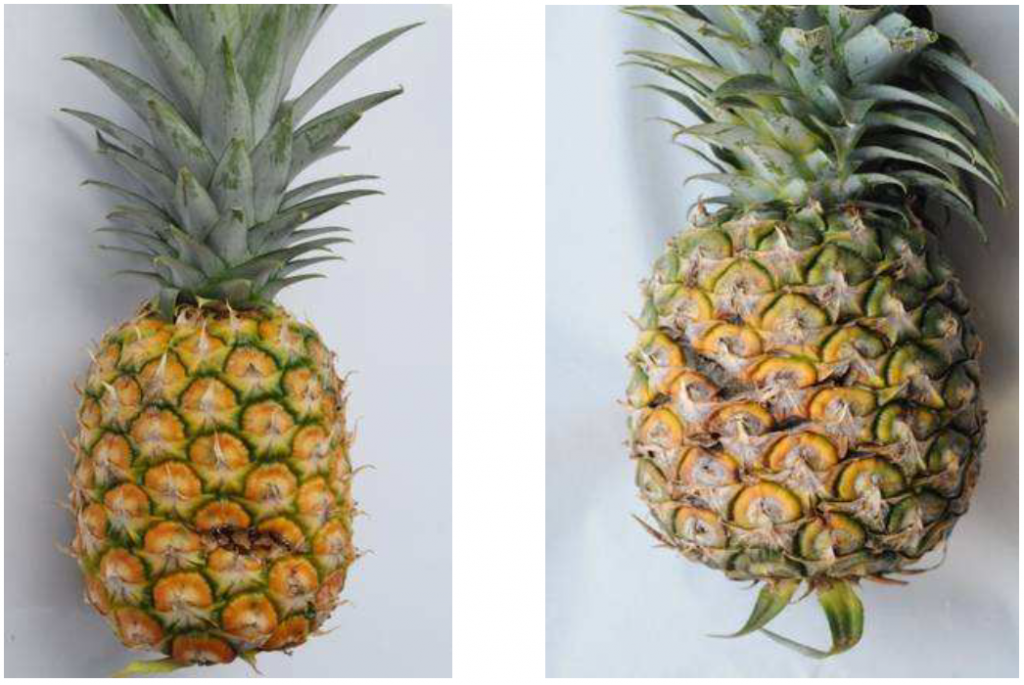
The Smooth Cayenne pineapple is an excellent choice for cooking and baking. Its sweet flavor pairs well with savory ingredients like chicken and fish, and it can be used to make everything from pineapple salsa to upside-down cake. If you’re looking for inspiration, check out this recipe for grilled pineapple with honey and cinnamon from Delish.
- The Smooth Cayenne can weigh up to 2.5 kilograms (5.5 pounds) and has a cylindrical shape.
- The fruit contains a tough central core that is not usually eaten, and small black seeds that are embedded within the flesh.
- The plant is a perennial herb with spiny leaves that can grow up to 1.5 meters (5 feet) in length.
- The Smooth Cayenne pineapple is a rich source of vitamin C, manganese, and dietary fiber.
- It also contains the enzyme bromelain, which potentially has anti-inflammatory and digestive benefits.
- The Smooth Cayenne pineapple has a relatively low glycemic index, meaning that it is less likely to cause a rapid spike in blood sugar levels compared to other sweet fruits.
- The flesh of the fruit contains high levels of natural sugars, including sucrose and glucose.
- The fruit also contains a variety of phytochemicals, including carotenoids and phenolic compounds, which have studied for their antioxidant and anti-inflammatory effects in the body.
Queen Victoria Pineapple
The Queen Victoria pineapple, also known as the Victoria pineapple, is another popular strain of pineapple. This variety is smaller than the Smooth Cayenne, with a rounder shape and spiky leaves. It has a sweeter and juicier flavor than the Smooth Cayenne, and its flesh is a lighter yellow color. The Queen pineapple is primarily grown in Southeast Asia, particularly in Thailand and Malaysia, and is often used in salads and desserts.
The Queen pineapple is a great choice for making refreshing drinks and cocktails. Its sweet and juicy flavor pairs well with mint, lime, and other citrus fruits. You can also use it to make a delicious and healthy fruit salad. Try this recipe for tropical fruit salad from Food Network for a delicious and nutritious snack.
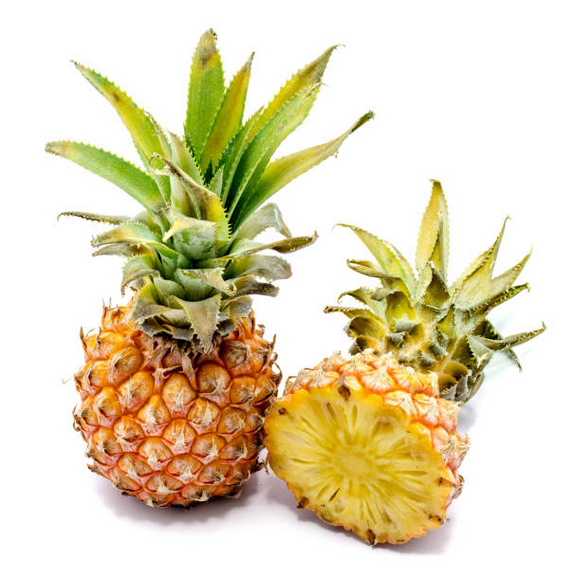
- The Queen Victoria pineapple is a relatively small fruit, typically weighing between 0.8 and 1.5 kilograms (1.8-3.3 pounds).
- The fruit has a round or slightly ovate shape, with a diameter of 10-15 centimeters (4-6 inches).
- The skin of the fruit is golden yellow in color when fully ripe and is covered in small, hexagonal scales.
Compared to other pineapple varieties, the Queen Victoria pineapple is relatively small and has a distinctive appearance with its hexagonal scales. Its sweet and floral flavor also sets it apart from other varieties, which tend to have a more tangy taste. In terms of nutritional value, the Queen Victoria pineapple is similar to other pineapple varieties, containing high levels of vitamin C, dietary fiber, and bromelain.
Red Spanish Pineapple
The Red Spanish pineapple is another popular strain of pineapple. This variety has a distinctive reddish skin with green scales, and is larger and more cylindrical than the Smooth Cayenne. Its flesh is also a pale yellow/greenish color and has a tart, acidic flavor. The Red Spanish pineapple is primarily grown in Costa Rica and other Central American countries, and is often used for fresh consumption.
The Red Spanish pineapple is a great choice for making tangy and flavorful salsa. Its acidic flavor pairs well with spicy ingredients like jalapenos and cilantro. You can also use it to make a refreshing pineapple smoothie. Try these recipies for some delicious pineapple cocktail drinks using Red Spanish Pineapple as an ingredient.
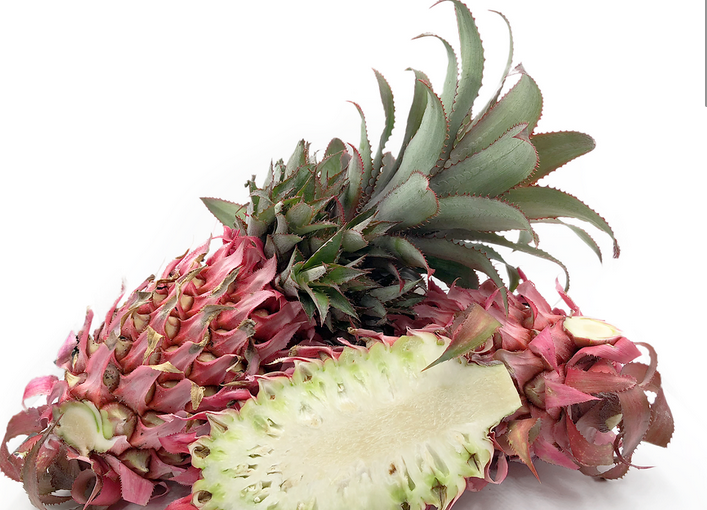
- The Red Spanish pineapple is a relatively large type of pineapple that can weigh up to 3 kilograms (6.6 pounds) and has a cylindrical shape.
- The skin of the fruit is green when unripe and turns to a reddish-orange color as it ripens.
Compared to other pineapple varieties, the Red Spanish pineapple has a distinctive appearance with its reddish-orange skin. Its firm and fibrous flesh also sets it apart from other varieties, which tend to have a softer texture. In terms of nutritional value, the Red Spanish pineapple is similar to other pineapple varieties, containing high levels of vitamin C, dietary fiber, and bromelain.
Sugarloaf Pineapple
The Sugarloaf pineapple is a less common strain of pineapple, but it is still a favorite among pineapple lovers. This variety has a cylindrical shape and a golden-yellow skin, with a pointed top and relatively narrow body. Its flesh is a pale yellow color and has a sweet, delicate flavor. The Sugarloaf pineapple is primarily grown in Brazil and is often used for fresh consumption and in salads.
The Sugarloaf pineapple is an excellent choice for making light and refreshing salads. Its sweet and delicate flavor pairs well with other fruits like strawberries and kiwi, as well as nuts and seeds like almonds and sunflower seeds.
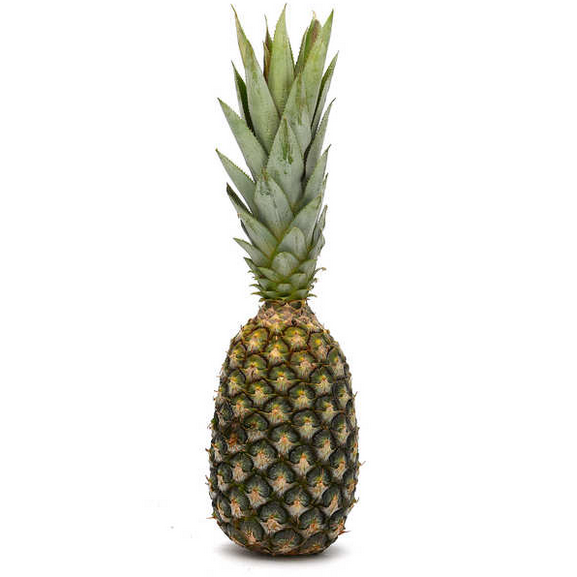
You can also use it to make a delicious and healthy smoothie bowl. Try this recipe for pineapple smoothie bowl from Ambitious Kitchen (with a bonus boozy option) for a delicious and nutritious breakfast.
- The Sugar Loaf Pineapple is a medium to large fruit that can weigh up to 2 kilograms (4.4 pounds).
- The fruit has a cylindrical shape with a rounded base and tapers to a point at the top.
- The skin of the fruit is golden yellow in color when fully ripe and is covered in small, hexagonal scales.
Compared to other pineapple varieties, the Sugar Loaf Pineapple has a distinctive shape with its tapered top. Its sweet and mild flavor also sets it apart from other varieties, which tend to have a more tangy taste. In terms of nutritional value, the Sugar Loaf Pineapple is similar to other pineapple varieties, containing high levels of vitamin C, dietary fiber, and bromelain.
MD-2 Pineapple Strain
Last but not least, we have the MD-2 pineapple, also known as the Golden Sweet pineapple.
One of my personal favorite strains of pineapple – this particular variety was developed in the 1990s in Costa Rica, and has since become increasingly popular due to its delicious flavor and attractive appearance.
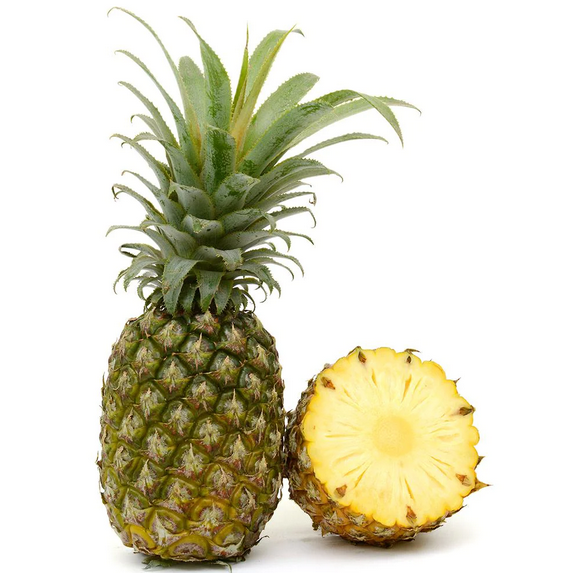
What makes the MD-2 Pineapple stand out is its sweetness. In fact, it’s been reported to have a brix level (a measure of sweetness) of up to 22, which is significantly higher than other strains of pineapple. This means that the MD-2 Pineapple has an extra juicy, succulent sweetness that’s hard to resist.
Another great thing about the MD-2 Pineapple is its texture. Unlike some other strains that can be fibrous or tough, the MD-2 Pineapple is known for its soft and tender flesh. It’s also less acidic than some other varieties, which makes it a great choice for those who find traditional pineapples a bit too tart.
The MD-2 Pineapple is also the easiest to grow yourself. You can check out our guide on how to grow your own indoor pineapple for that extra-satisfying pineapple.
Overall, the MD-2 Pineapple is a delicious and delightful choice for anyone who loves sweet, juicy fruit. Whether you enjoy it fresh or use it in recipes like smoothies, salads, or desserts, this strain of pineapple is sure to please. So next time you’re at the grocery store or your local farmers’ market, be sure to keep an eye out for the MD-2 Pineapple and give it a try!
- The MD-2 Pineapple is a medium to large fruit that can weigh up to 2.5 kilograms (5.5 pounds).
- The fruit has a cylindrical shape with a rounded base and tapers to a point at the top.
- The skin of the fruit is golden yellow in color when fully ripe and is covered in small, hexagonal scales.
Compared to other pineapple varieties, the MD-2 Pineapple has a similar shape to the Sugar Loaf Pineapple, with its tapered top. Its extra-sweet and fruity flavor sets it apart from other varieties. In terms of nutritional value, the MD-2 Pineapple is a particularly high source of vitamin C, dietary fiber, and manganese. It also has a relatively low glycemic index and contains a range of beneficial phytochemicals.


0 Comments